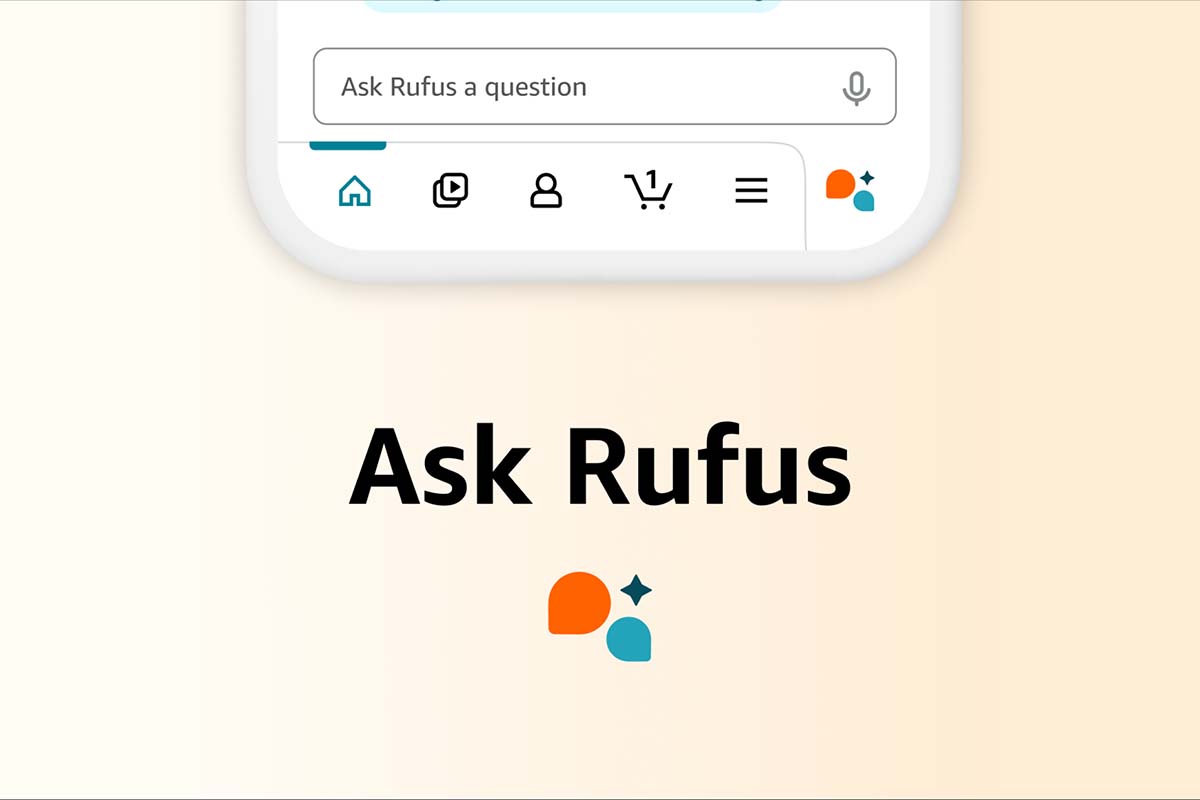Rufus is Amazon’s new generative AI shopping assistant and it’s now available to all users of the Amazon shopping App in the US. Rufus is designed to help customers save time and make more informed purchase decisions by answering questions on a variety of shopping needs.
Customers are asking Rufus specific product questions, and Rufus is sharing answers based on the helpful information found in product listing details, customer reviews, and community Q&As.
What can Rufus be asked?
Customers are asking Rufus questions like, “Is this coffee maker easy to clean and maintain?” and “Is this mascara a clean beauty product?” They’re also clicking on the related questions that Rufus surfaces in the chat window to learn more about the product—for example, “What’s the material of the backpack?” Customers can also tap on “What do customers say?” to get a quick and helpful overview of customer reviews.
One customer recently said they asked Rufus about a pool umbrella recommendation for Florida, and Rufus shared facts about Florida’s weather, humidity, and suggested umbrella features. Customers are asking questions such as, “What are the best wireless outdoor speakers?” and “What are the best lawn games for kids birthday parties?” and receiving high-quality, informative answers that help them make a product selection.
Customers are also using Rufus to quickly compare features by asking questions like, “What’s the difference between gas and wood fired pizza ovens?” Aspiring runners are asking questions such as, “Should I get trail shoes or running shoes?” and people shopping for TVs are asking Rufus to, “Compare OLED and QLED TVs.”
And if it’s the latest products and trends you want, Rufus can help keep you up-to-date and answer questions like, “What’s the most advanced Fire tablet for kids?” and “What are denim trends for women?”
As you’d expect, customers have fast, easy access to package tracking with Rufus, and are asking questions such as, “Where is my order?” or more specifically, “When are my dog treats arriving?” to know when they can expect their latest order. They also have quick access to past orders, asking questions that help them make decisions based on what they’ve ordered previously, including “When was the last time I ordered sunscreen?”
Because Rufus can answer a wide range of questions, it can help customers at any stage of their shopping journey. A customer interested in cookware may first ask, “What do I need to make a soufflé?” Preparing for special occasions is also popular among customers, with shoppers asking questions like, “What do I need for a summer party?”
Rufus vs Alexa
Rufus isn’t Amazon’s first AI shopping Assistant, and I couldn’t help but want to compare it’s results with Alexa.
On my Echo show, when I asked “What do I need to make a soufflé” the main difference with Rufus is that Alexa dived deeper into the recipe with different options such as adding fruit etc to the mix. As I was writing this article at the time, I thought Alexa hadn’t offered any product selections which Rufus does…. But then a ping alerted me to the Echo Show screen and sure enough the product suggestions for soufflé, mixing bowls etc were there.
While Rufus is currently restricted to the Amazon Shopping App in the US, it’s expected to roll out on desktop shortly. You’ll find Rufus (if you’re in the US and update your app), by clicking the Rufus icon in the navigation bar at the bottom of your screen.
Why Rufus?
Amazon’s Rufus AI Shopping Assistant was named after Rufus, an early Amazon employee’s pet who regularly came into the office, and when Amazon moved his right of access was written into the contract with the landlord as a one off exception. When others started sneaking their dogs into work, eventually a declaration was made that all dogs were to be called Rufus while at work to avoid any contractual breaches. Dogs are still welcome at Amazon today and over 10,000 regularly go to work!

